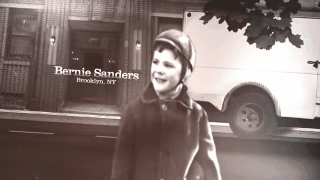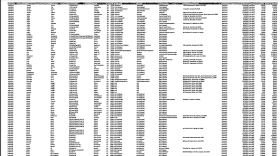Every four years, New Hampshire Primary candidates and their supporters buy up hours of commercial time on local TV in hopes of attracting potential voters.
But, this year, all the advertising has not translated into more support, especially on the Republican side.
NHPR’s digital reporter Brian Wallstin has been tracking the primary-ad war and he’s giving NHPR's All Things Considered the lay of the land.
So, here we are – a little more than two months before the primary. Are viewers sick of all the political ads yet?
No one would be surprised if they were, Peter, although there is some anecdotal evidence that we’re not seeing the same volume of ads this year as in past primary years.
But there’s still plenty of time left, a lot of candidates still in the race and, thanks to all the Super PACs involved this year, there’s still plenty of money to be spent.
Let’s talk about the role of Super PACs. These groups didn’t exist in 2008, the last time both parties fielded competitive primaries. But they’ve really changed the nature of the campaign and how candidates reach out to voters.
They have. Super PACs can raise and spend unlimited amounts of money on an election, but they can’t give money directly to candidates. They can provide other types of support, like direct mail and television advertising, as long as they don’t coordinate the message with the candidate.
This so-called outside spending has really changed political advertising, especially on TV. In 2008, almost all of the ads were paid for by for by the Obama and McCain campaigns, and the overwhelming majority were positive.
By 2012, Super PACs and other outside groups, like non-profit social welfare groups, sponsored well over half of all the ads, and more than 85 percent were attack ads.

So not only are viewers being subjected to more ads, they are being subjected to more negative messages. Is that true so far this year?
Not yet, although that’s likely to change as we get closer to primary day.Super PACs are still funding a large percentage of the ads, especially on the Republican side. Right to Rise, the group supporting Jeb Bush, has aired roughly 2,600 ads so far, but all of them have touted the candidate’s experience and credentials.
The Super PAC backing Chris Christie has been very active as well - but again, it’s advertising strategy has been to present the New Jersey governor in a positive light rather than attack his rivals.
What about the Democrats?
Super PACs haven’t been a factor on the Democratic side yet. Both Hillary Clinton and Bernie Sanders have relied on their campaign coffers to purchase ad time on local television.

A Super PAC allied with Clinton’s campaign, Priorities USA, has yet to make any ad buys in New Hampshire, and Sanders doesn’t even have Super PAC support - his campaign is relying on small donors.
Obviously the New Hampshire primary is a boon to local television stations – they stand to make a lot of money from all this advertising. But what impact has it had on the race itself?
Surprisingly, very little to date. Consider Jeb Bush – Right to Rise has spent the most on TV advertising, more than $8 million so far. But in the most recent poll, I think he’s in 7th or 8th place.
On the other hand, the Republican frontrunner, Donald Trump, has yet to air a single campaign ad in New Hampshire. He hasn’t had to – he gets plenty of what’s called “earned media,” which is another term for “free publicity.”
What kind of spending are we talking about so far, and what’s likely to happen as we get closer to primary day?
Well, between mid-April, when the first spot aired on WMUR, and November 30, between $25 million and $30 million has been spent to air more than 14,000 ads on New Hampshire and Boston stations.

At least three quarters of that came from Super PACs, which are typically charged rates that are four or five times more than the candidates pay. That explains why, for example, the PAC supporting Jeb Bush has spent more than twice as much as the Clinton campaign, but has run more than 1,000 fewer ads.
Looking ahead, expect to see a lot of Bush and Marco Rubio. The two Republicans and their supporters account for more than three quarters of the ads reserved through primary day.
What kind of bottom line spending are we likely to see?
I hesitate to predict how much will be spent when its all said and done, Peter, though I think it’s safe to say that, if you’re not tired of all the ads yet, just give it time.








